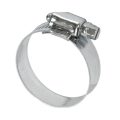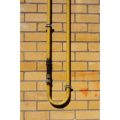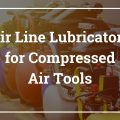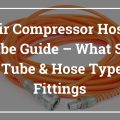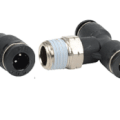Hey! This site is reader-supported and we earn commissions if you purchase products from retailers after clicking on a link from our site.
Installing the right size pipes in your compressed air system can be crucial in minimizing the effects of pressure drop. You must ensure you install the right-sized air pipes for this reason, and so, calculating the correct pipe size at the start of your project can help you save a lot of money in the future.
This article will provide you with a CFM pipe size chart that can be used as a guideline for when you are selecting the right pipe sizes for your system.
Table of Contents
- CFM Pipe Size Chart
- CFM Pipe Size Discussion
- Determining Your Pipe Size – Tips
- FAQs (Frequently Asked Questions)
CFM Pipe Size Chart
Let’s get straight into it, the following chart will help you gain a better understanding of the pipe size you need depending on the volume of airflow you have running through it, and its length!
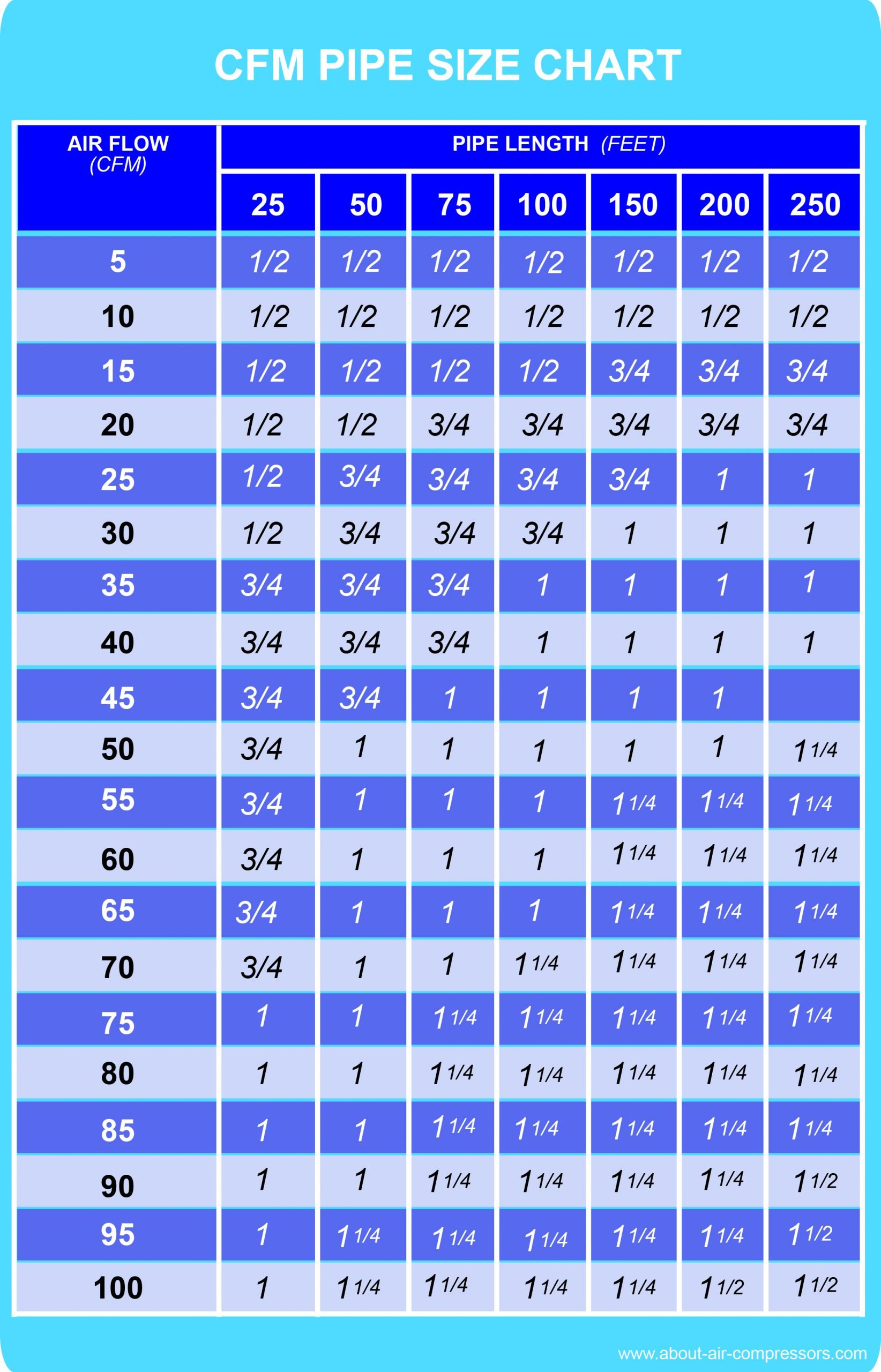
| Air Flow (CFM) | Pipe Length (feet) 25 | Pipe Length (feet) 50 | Pipe Length (feet) 75 | Pipe Length (feet) 100 | Pipe Length (feet) 150 | Pipe Length (feet) 200 | Pipe Length (feet) 250 |
|---|---|---|---|---|---|---|---|
| 5 | ½ | ½ | ½ | ½ | ½ | ½ | ½ |
| 10 | ½ | ½ | ½ | ½ | ½ | ½ | ½ |
| 15 | ½ | ½ | ½ | ½ | ¾ | ¾ | ¾ |
| 20 | ½ | ½ | ¾ | ¾ | ¾ | ¾ | ¾ |
| 25 | ½ | ¾ | ¾ | ¾ | ¾ | 1 | 1 |
| 30 | ½ | ¾ | ¾ | ¾ | 1 | 1 | 1 |
| 35 | ¾ | ¾ | ¾ | 1 | 1 | 1 | 1 |
| 40 | ¾ | ¾ | ¾ | 1 | 1 | 1 | 1 |
| 45 | ¾ | ¾ | 1 | 1 | 1 | 1 | 1 ¼ |
| 50 | ¾ | 1 | 1 | 1 | 1 | 1 ¼ | 1 ¼ |
| 55 | ¾ | 1 | 1 | 1 | 1 ¼ | 1 ¼ | 1 ¼ |
| 60 | ¾ | 1 | 1 | 1 | 1 ¼ | 1 ¼ | 1 ¼ |
| 65 | ¾ | 1 | 1 | 1 | 1 ¼ | 1 ¼ | 1 ¼ |
| 70 | ¾ | 1 | 1 | 1 ¼ | 1 ¼ | 1 ¼ | 1 ¼ |
| 75 | 1 | 1 | 1 ¼ | 1 ¼ | 1 ¼ | 1 ¼ | 1 ¼ |
| 80 | 1 | 1 | 1 ¼ | 1 ¼ | 1 ¼ | 1 ¼ | 1 ¼ |
| 85 | 1 | 1 | 1 ¼ | 1 ¼ | 1 ¼ | 1 ¼ | 1 ¼ |
| 90 | 1 | 1 | 1 ¼ | 1 ¼ | 1 ¼ | 1 ¼ | 1 ½ |
| 95 | 1 | 1 ¼ | 1 ¼ | 1 ¼ | 1 ¼ | 1 ¼ | 1 ½ |
| 100 | 1 | 1 ¼ | 1 ¼ | 1 ¼ | 1 ¼ | 1 ½ | 1 ½ |
CFM Pipe Size Discussion
In a compressed air system, any pressure losses that are greater than 3% are considered excessive and so, when designing the system, users typically try to ensure that the system has a maximum loss of around 1%. Well-designed systems will have a steady rate of airflow and aim to lose only 1 PSI for a system that is at 100 PSI.
Any kind of obstruction in a compressed air system can lead to a pressure drop. Things like flexible hoses, pipe length, quick-connect, and other types of couplings, filters, regulators, lubricators, and other components are all going to cause pressure drop. Therefore, you must select the right size pipe to ensure you can minimize the pressure drop as much as possible.
As can be observed in the chart, the pipe size in inches depends not only on the volume of air in CFM (Cubic Feet per Minute) flowing through it but also on how far that air must be carried. Typically, to ensure that the distribution loss is not greater than 1%, or 1 PSI, the greater the length of piping, the greater the diameter of the pipe needed to carry the same flow as a smaller pipe on a shorter length of pipe.
The chart represents a 100 PSI compressed air system designed to transport the flow of air with less than a 1 PSI loss. If you had a system carrying 110 PSI then these pipe sizes will carry more air than is indicated in the chart, or the pressure loss will be even lower. If the system was carrying 90 PSI, then the pipe sizes would carry less air than indicated.
The left column in the chart represents the volume of air that is to be carried through the system, in CFM. It is difficult to estimate the amount of airflow volume flowing through each system as it will vary depending on the application. Some distribution systems will have many air-operated machines and tools operating off many legs like in a factory or plant setting. Here, the flow should be at a fairly steady rate, compared to a smaller system that has a high surge of air and then a period of almost no flow.
If you wish to learn ways in which you can increase CFM, visit our guide!
Determining Your Pipe Size – Tips
In order for you to choose the correct diameter of the pipe for your air compressor system, you need to know how much flow rate (CFM) you intend to have traveling through your pipe, and how long the pipe will be. You must remember when choosing your diameter, that the larger the size the greater the airflow. But, this will drive the costs of the system up so you should size your air compressor system based on the tools you use.
Optimum flow rate systems are typically installed as a loop, where they start at the air compressor and loop around the shop or garage back to the compressor as in the example below. Doing so increases the flow rate and decreases pressure drop across the whole system. Which will allow you to use smaller-diameter pipes.
The thread size of the port on your air compressor tank outlet does not determine the size of your pipe for your system, a very common misconception. You calculate the pipe size using your desired length and the air compressor CFM output. Even with the air compressor tank outlet port being small because the air is only traveling a short distance so the restriction is minimal.
Finally, I would like to leave you with some tips to help you with your pipe size considerations:
- Compressed air becomes restricted over long distances
- The flow rate decreases the further it is from the compressor
- Larger pipe sizes increase airflow but also costs
- Longer distances require large pipe diameters
- Sizing down piping at the end of a run decreases the flow rate and offers no benefits
FAQs (Frequently Asked Questions)
A 1/2″ pipe can have anything up to 10 CFM of airflow across lengths of pipe up to 250 feet. You may even be able to have up to 30 CFM flowing through a 1/2″ pipe, but only for lengths of pipe up to 25 feet.
To know what size compressed air pipe you need, you must know the length of your intended system and the CFM you intend to flow through. With these two values, you can refer to an air compressor pipe size chart to get the correct size piping for your system.
Additional CFM reading:
- SCFM Vs ACFM Vs ICFM – What’s The Difference? Converting & Calculating
- Best Ways to Increase CFM On Air Compressors
- Connecting Two Air Compressors Together
- How to Calculate CFM of Air Compressors
- SCFM vs CFM for Air Tools & Air Compressors Guide to Compressor Ratings
- What Is CFM and What Does CFM Mean on An Air Compressor?
- Air Compressor Size For Spraying Stucco & Plaster
- Does a die grinder require low or high CFM?
- Speedaire 4B247 swapped with 2Z499 and its effect on CFM?
- 20 CFM Air Compressor – Buying, Hiring, What Can They Run?
- Air Compressors That Produce 500 CFM And Above
- CFM SCFM PSI Compressor Flow Issues
- Ingersoll Rand Type 30 model 242 HP and CFM?
- CFM rating of Black Max compressor
What size air compressor:
- What Size Air Compressor Do I Need? How to Size An Air Compressor
- What Size Air Compressor Do I Need For Impact Wrench?
- What Size Air Compressor For Sander?
- What Size Air Compressor For Sandblasting?
- What Size Air Compressor For Framing Nailer?
- What Size Air Compressor For Air Hammer?
- What Size Air Compressor For Air Ratchet?
- What Size Air Compressor for Car Detailing?
- What Size Air Compressor for Truck Tires?
- What Size Air Compressor For Nail Gun
- What Size Air Compressor for Painting Cars?
- What Size Air Compressor Do I Need for Spray Painting?
- What Size Air Compressor For Staple Gun Or Upholstery Air Stapler?
- What Size Air Compressor For Sandblasting?
- What Size Air Compressor Do I Need For A Die Grinder?
If you have any questions regarding CFM pipe size, please leave a comment below, with a photo if applicable, so that someone can help you!

